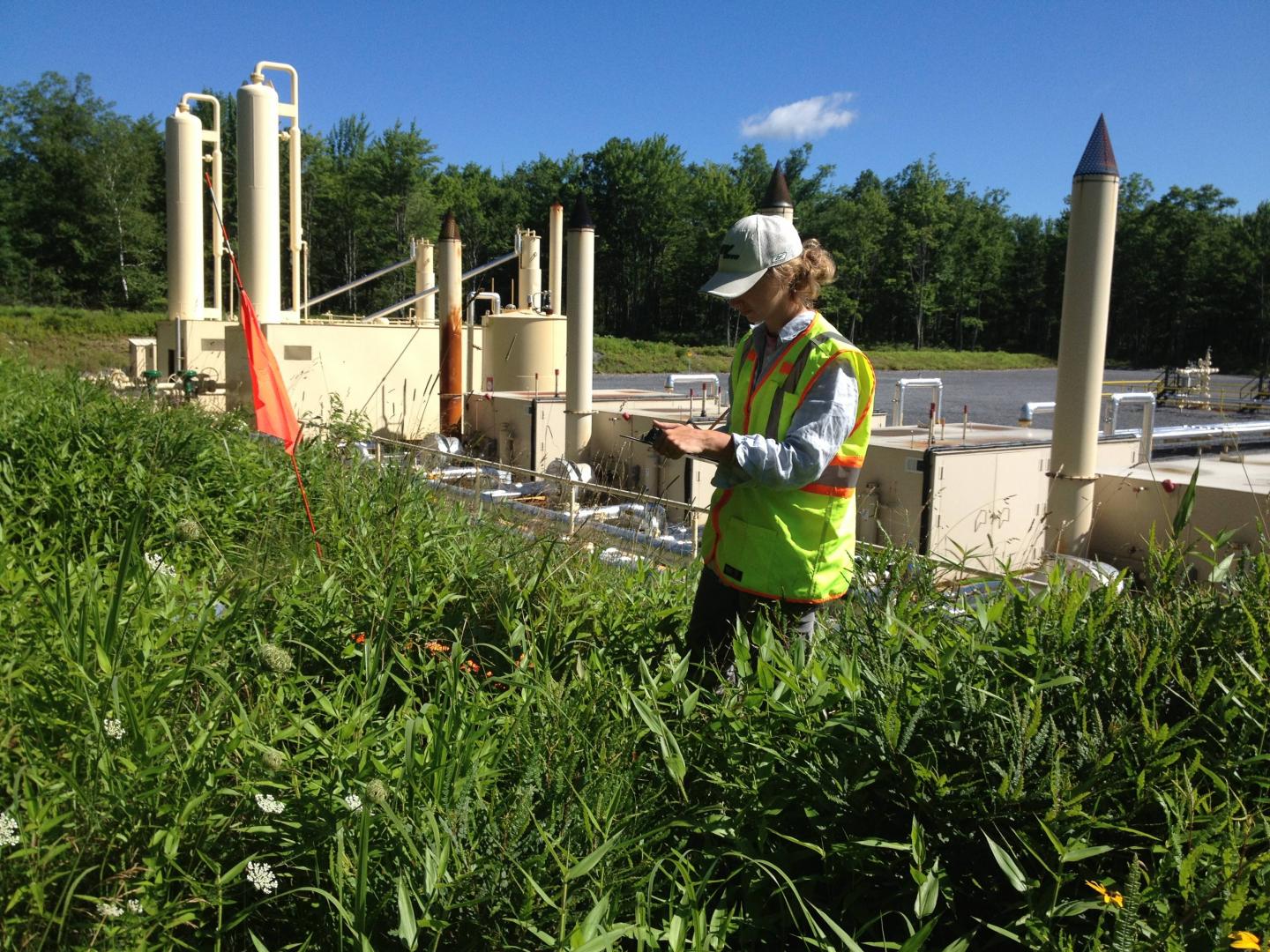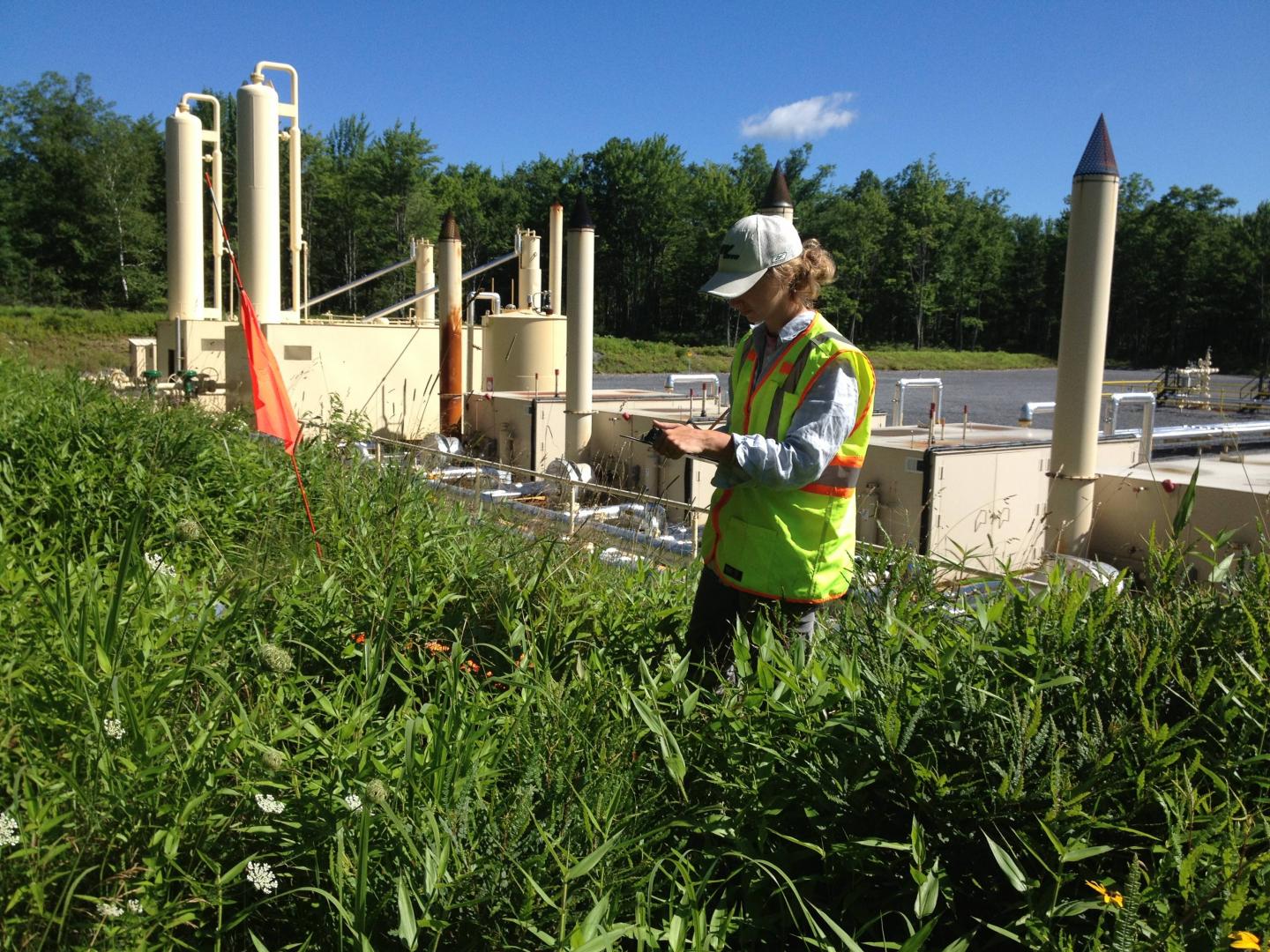
Credit: Mortensen Lab, Penn State
Vast swaths of Pennsylvania forests were clear-cut circa 1900 and regrowth has largely been from local native plant communities, but a team of researchers in Penn State's College of Agricultural Sciences has found that invasive, non-native plants are making significant inroads with unconventional natural gas development.
The spread of invasive non-native plants could have long-term negative consequences for the forest ecosystem in a region where the ubiquitous woods provide timbering revenue, wildlife habitat and ecotourism, warns team member David Mortensen, professor of weed and applied plant ecology.
In recent years, he and other researchers at the University have been tracking the ecological impact of hundreds of well pads, access roads and pipelines built to extract gas from the Marcellus shale.
"Studies have shown that when invasive plants such as Microstegium vimineum (Japanese stiltgrass) move into an area, it changes the plant community, and native plants tend to decline," Mortensen said. "Soon we will see a ripple effect in the forest ecosystem that will affect organisms that depend on the native plants. Ultimately, economic factors such as timber harvests may be affected, and wildlife and bird communities likely will change."
This most recent Penn State study documents that non-native plants are rapidly invading Pennsylvania's northern forests and establishes a link between new invasions and shale gas development activity. In findings published today (July 20) in the Journal of Environmental Management, researchers show a direct correlation between the extent of non-native plant invasion and distinct aspects of shale gas development.
To investigate, researchers conducted invasive plant surveys on and around 127 Marcellus shale gas well pads and adjacent access roads in seven state forest districts in the Allegheny National Forest. Study sites were distributed across the Allegheny High Plateau, which is dominated by mixed-oak and Northern hardwood forests; the Pittsburgh Plateau; and the Ridge and Valley regions of central Pennsylvania, dominated by mixed-oak forests.
Sixty-one percent of pads had at least one invasive, non-native plant species, and 19 percent of those had three or more species. Reed canary grass, spotted knapweed, creeping thistle, Japanese stiltgrass and crown vetch were the most common invasives found.
The study provides striking evidence that invasive plant presence on well pads is correlated with the length of time since pad construction; the number of wells drilled per pad; invasive plant abundance on adjacent well pad access roads; and the density of roads in the area of the pad prior to construction. Using field data from the 127 well pads, researchers created a model to evaluate direct and indirect relationships between mechanisms and conditions that could account for invasive plant presence.
Surrounding plant communities were also surveyed on a randomly selected set of 32 well pads in the study. Non-native plant cover was greater on the disturbed well pad edges than in the surrounding plant communities.
Researchers found evidence that invasive plants were introduced in gravel delivered to build pads and roads, and in mud on the tires and undercarriages of trucks traveling those roads, noted lead researcher Kathryn Barlow, a doctoral degree candidate in ecology. She pointed out that previous Penn State research demonstrated Japanese stiltgrass seeds were moved by road-grading equipment on gravel roads in forests.
"Given the fact that, on average, 1,235 one-way truck trips delivering fracturing fluid and proppant are required to complete an unconventional well, the potential to transport invasive plant propagules is significant," she said. Propagules are parts of a plant that can generate a new plant, such as seeds, spores and roots.
"Material and equipment used for road construction and maintenance can play an important dispersal role. Road development can create pathways for invasive plant establishment and spread," Barlow added.
Non-native plant invasion into forests can lead to the demise of native plants in surprising ways, Mortensen pointed out, referring to a study his lab conducted at the Penn State Deer Research Center that was published in April 2016. That research demonstrated that white-tailed deer prefer native plants and seem to avoid eating invasives.
"So if we have Microstegium filling the forest understory and deer are looking for something to eat — since they don't feed much on Microstegium at all — the deer clip off any native plant growth that manages to get through the invasives," he said. "That allows the invasives to further dominate the plant community.
"As a result, the recruitment of economically important tree species will be curtailed. This process can be really damaging to the health of the forest in the long run, and even in the short term."
###
Also involved in the research were Patrick Drohan, associate professor of pedology, and Kristine Averill, a research associate with Cornell's Weed Ecology and Management Laboratory, also a former Mortensen lab member.
The Pennsylvania Department of Conservation and Natural Resources supported this work.
Media Contact
A'ndrea Elyse Messer
[email protected]
814-865-9481
@penn_state
http://live.psu.edu





